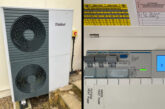
Why are RCD sockets still popular? Neil Chapman, Sales Director at Timeguard, offers his thoughts.
The 18th Edition gives us detailed information on the different types of RCDs These regulations apply to the design and verification of electrical installations as well as any additional and/or alteration of existing installations of sockets rated to a maximum of 32 amps in locations such as kitchens, bathrooms, and outdoor areas.
RCD protection must be provided to all circuits supplying luminaries and all circuits supplying outdoor appliances. In fact, the requirements for all sockets to be protected by either RCDs or RCBOs goes back to 2015 (the 17th Edition).
So what is it that makes RCD sockets and connection units so popular still?
Why SRCDs?
Sockets with integral RCDs, also known as SRCDs, are primarily intended to provide supplementary protection in circuits where there is already fault protection at the consumer unit. They offer additional protection against electrocution in key areas of a property or workplace. They also offer a local and more accessible position for resetting following a tripping event.
Don’t forget that older properties with old wiring may not have suitable RCD protection upstream and, if they’re still ‘compliant’ (strictly speaking) and customers aren’t prepared to consider upgrading, you can recommend SRCDs at most locations throughout the property.
The SRCDs mechanism itself is double pole switching and SRCDs can easily be fitted within standard 35 mm deep wall boxes. They’re also an easy way to add protection outdoors where you’re asked, for example, to fit an IP-protected socket.
Which SRCDs?
You’re installing these devices for safety, so your top priority should be quality and reliability. Choose a supplier and brand you know you can trust.
Your minimum requirement should be compliance with BS 7288:2016: Specification for residual current devices with or without overcurrent protection for socket-outlets for household and similar uses. This standard was published in November 2016, being a further revision of BS 7288.
Any products you come across that are old enough not to comply with the 2016 standard are likely to have been made with older generations of electronic components, unlike the newer designs by reputable manufacturers who have invested in bringing the latest technology to market.
The main visible sign of compliance with the standard is the dual-flag indication system to show whether the power is live RED – ON, or Green – OFF when the RCD is tripped.
However, ‘under the bonnet’, other changes add up to greater reassurance for users. They mostly relate to EMC resilience, with more stringent testing to ensure products can withstand years of use and electrical or physical abuse and RF interference.
You should also be able to choose white and metal boxes, indoor sockets or outdoor Weathersafe sockets, single and dual gang.
Active or Passive?
Make sure you know if the device is mechanically latching (Passive) or electrically latching, (Active).
Active protection will leave the SRCD in an unlatched state in the event of either a power outage, or a tripping event, and the power will remain isolated until the user has checked the device and manually chosen to reset it.
Passive devices allow the power to be restored automatically to appliances like fridges and freezers after there has been a power outage and then restored, and it doesn’t need to be physically reset.
Get more details about Timeguard’s range of RCD socket protection devices here
Read more industry feature articles here












